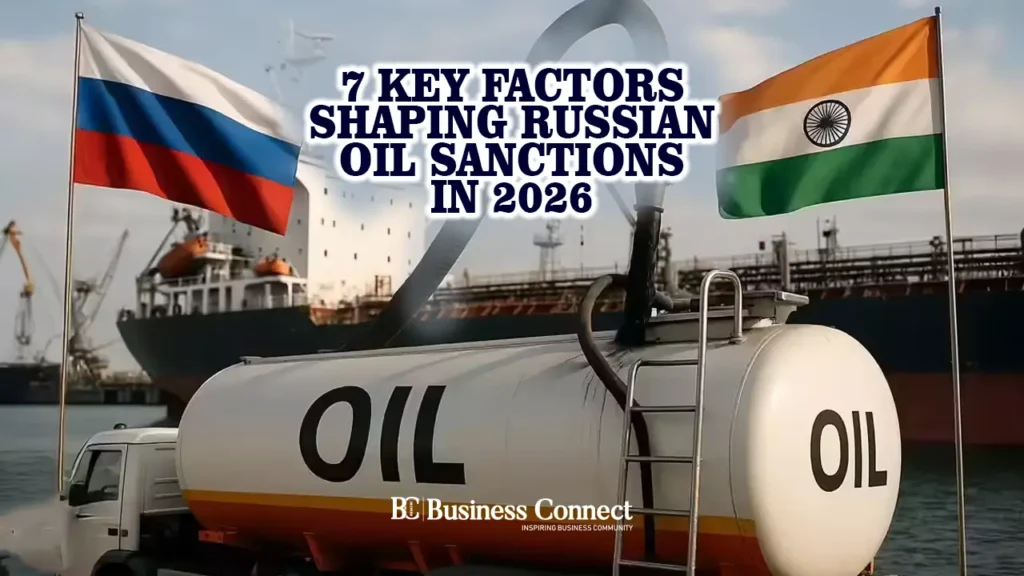7 Key Factors Shaping Russian Oil Sanctions in 2026
As the world steps into 2026, Russian oil sanctions continue to stand as one of the most significant geopolitical and economic forces impacting global energy markets. Since their introduction in response to the Ukraine conflict, these sanctions have reshaped trade dynamics, accelerated Europe’s green energy transition, and redefined global power alignments.
Below, we explore the seven major factors influencing Russian oil sanctions in 2026 — and how they are transforming the future of global energy, diplomacy, and economics.
1. Geopolitical Forces Behind Sanctions Policy
NATO and EU Coordination
The foundation of Russian oil sanctions lies in the coordinated strategy of Western alliances. The European Union (EU), backed by NATO members, continues to tighten restrictions on oil imports, maritime insurance, and energy financing.
By 2026, the approach has become more targeted — focusing on halting advanced technology transfers and limiting pipeline investments rather than broad import bans.
However, internal divisions persist within the EU. Nations like Hungary and Slovakia, which still depend on Russian oil, push for limited exemptions. Despite this, mechanisms such as the price cap and shipping restrictions continue to keep Russia’s export revenues under significant strain.
U.S.–Russia Relations Post-2025
Following the U.S. administration change in 2025, Washington adopted a dual strategy — strengthening sanctions enforcement while allowing waivers for strategic partners such as India. This reflects a pragmatic balance between maintaining global energy stability and sustaining economic pressure on Moscow.
2. Global Energy Market Reactions
Price Caps and Export Redirection
When the sanctions were first implemented, global crude prices surged. By 2026, however, markets have adjusted as Russia redirected exports to Asia.
China, India, and Turkey have become major buyers, often purchasing crude at discounted rates. The $60 per barrel price cap has largely become symbolic, as a growing “shadow fleet” enables off-the-record shipments through alternative trade routes.
OPEC+ Balancing Strategy
Despite sanctions, Russia remains a key player in OPEC+, working closely with Saudi Arabia to manage production quotas and stabilize global prices. This cooperation underscores Moscow’s continued leverage in the international energy landscape.
3. Russia’s Economic Resilience
While sanctions aimed to cripple its economy, Russia has adapted with surprising resilience. Strategic fiscal policies, robust domestic production, and partnerships with non-Western nations have helped absorb much of the impact.
Ruble Stability and Trade Partnerships
The Central Bank of Russia has strengthened the ruble by boosting gold reserves and promoting ruble-based energy settlements. Trade with China, India, and the UAE through non-SWIFT banking channels has enabled Russia to bypass Western systems, maintaining steady energy revenues and funding state operations.
4. Technological and Logistical Adaptations
Shadow Fleets and Digital Payments
To overcome restrictions on insurance and payments, Russia has built a vast “shadow fleet” — vessels with opaque ownership, insured outside the West, and used primarily to ship crude to Asia and Africa.
Additionally, cryptocurrency transactions and digital barter systems have gained traction, signaling the rise of decentralized oil trading. This innovation highlights how sanctioned nations evolve technologically to sustain economic lifelines.
5. Energy Diversification Across Continents
Europe’s Green Shift
Europe has used the sanctions crisis as a springboard to accelerate energy diversification.
Countries like Germany and Poland have increased LNG imports from the U.S. and Qatar while investing heavily in offshore wind farms and nuclear power. The result is a historic shift toward energy independence from Russian resources.
Asia’s Balanced Approach
In contrast, India and China are pursuing a dual strategy — securing discounted Russian crude while scaling up investments in renewable energy infrastructure. This pragmatic mix ensures both affordability and energy security.
6. Global Trade Realignments
Rise of Non-Western Alliances
The sanctions have triggered a global realignment of trade blocs. The expanded BRICS+ group, now including Saudi Arabia, Iran, and Argentina, is building parallel financial systems and experimenting with digital currencies for trade beyond Western oversight.
For instance, India now settles Russian oil deals in rupees, highlighting the rise of a multi-polar trade era where Western financial dominance is no longer absolute.
7. Future Outlook: Sanctions and Global Stability
Possible Scenarios Ahead
Experts outline three possible paths for the evolution of Russian oil sanctions beyond 2026:
Extended Sanctions: If diplomatic tensions persist, existing restrictions could continue or tighten further.
Gradual Easing: Partial relaxation could occur if geopolitical negotiations make progress.
Framework Restructuring: Sanctions may shift toward targeted entities rather than nationwide bans, ensuring economic control without full market disruption.
Whatever the outcome, one fact is certain — Russian oil sanctions have permanently altered global trade, prompting countries to innovate in policy, technology, and diplomacy.
FAQs: Understanding Russian Oil Sanctions
1. What are Russian oil sanctions?
They are economic restrictions imposed by Western nations to limit Russia’s energy revenues and reduce its geopolitical influence.
2. How have these sanctions affected global oil prices?
Initially, prices spiked due to supply disruptions, but by 2026, prices have stabilized as Russia redirected exports to Asia.
3. Which countries still import Russian oil?
Major buyers include India, China, and Turkey, which purchase crude at discounted rates.
4. Are the sanctions weakening Russia’s economy?
Only partially. Russia has mitigated losses through trade diversification, alternative payments, and strong partnerships with non-Western allies.
5. How is Europe responding?
European nations are investing heavily in LNG, renewable energy, and nuclear projects to reduce dependence on Russian oil.
6. Will the sanctions end soon?
Not likely. The future of these sanctions depends on geopolitical developments and global security stability.
Conclusion
The Russian oil sanctions of 2026 mark a turning point in global economics — where energy, politics, and innovation intersect. Whether they lead to a new era of energy independence or deeper geopolitical divides, their impact will continue to shape the world’s energy and trade systems for years to come.



